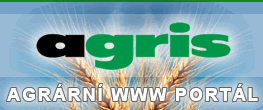INFLUENCE OF SEED INOCULATION OF ALFALFA AND RED CLOVER ON THEIR YIELD
09.12.1999 | Odborné konference
VLIV OČKOVÁNI OSIVA NA VÝNOSY VOJTĚŠKY SETÉ A JETELE LUČNÍHO
B.Shejbal, - J. Šantrůček
Czech University of Agriculture, Faculty of Agronomy, Department of Forage Crops Production, Kamýcká 957, 165 21 Prague 6, Czech Republic
Summary
The influence of inoculation of alfalfa (Medicago sativa) and red clover (Trifolium pratense) (2n and 4n cultivars) seeds on yield was observed compareing to no inoculated variants. There was a significant increase of yield by the influence of inoculation of legumes on the variants established with companion crops as peas and oats and the legumes established as a clear seeded. This increase of yield covered the costs of commercial preparation Rizobin up to 5 to 30 times and dry mass yield increased from 5 to 47%. The influence of inoculation have no positive response on variants established to barley used as a companion crop.
alfalfa, red clover, inoculation, Rizobin, yield ability
Souhrn
Byl zkoumán vliv očkování osiva vojtěšky seté a jetele lučního (diploidní a tetraploidní odrůdy) novými kmeny na výnos píce v porovnání s variantami neočkovanými. Vlivem očkování jetelovin došlo ke zvýšení výnosu u variant založených do krycí plodiny ovsa a úponkového hrachu tak i založených bez krycí plodiny. Toto zvýšení výnosu převýšilo náklady na Rizobin 5 až 30 krát a výnos sušiny se zvýšil o 5 až 47%. Vliv očkování se neprojevil u variant založených do krycí plodiny ječmene.
vojtěška, jetel luční, inokulace, Rizobin, výnos
INTRODUCTION AND LITERAL SURVEY
The seeds inoculation of legumes is the necessary part of their profitable growing. The preparations used for inoculation contains effective strains of rhizobium bacteria, which are able to fix N2 effectively. Czech preparation is called Rizobin and it is produced in VOL Stránčice. Legumes inoculated with Rhizobin are grown economically without nitrogen fertilizes, which we do not have to use in this growing technology without decreasing of yield by the influence of unsufficient of nitrogen (Kálalová, Šimon, 1995).
Estimates of N2 fixation in alfalfa vary from 50 to 463 kg of N2 fixed ha-1.yr-1 with about 200 kg of N2 fixed ha-1.yr-1 average. The variation in N2fixation of alfalfa is the result of number of factors, the most important being: bacterial strains by plant genotype interactions and differences in management practices in various climates and locations (Vance, 1988).
There is also important decline in sale of Rizobin for inoculation of legumes in the last 10 years. There were sold in the season 1998 - 1999 compare to season 1989 - 1990 only 20%of hectare dose of Rizobin for alfalfa and only 10% for red clover (VOL Stránčiče, 1999)
MATERIAL AND METHODS
The experiment was established in the spring of 1999 on lands of Research Station in Červený Újezd, 405 m above sea level. Average annual temperature is 7,6 °C and with annual precipitation 549 mm.
The experiment organization: the influence of inoculation was investigated on alfalfa - cultivar Jarka, on diploid red clover - cultivar Tábor and on tetraploid red clover - cultivar Vulkán. The legumes were always established as inoculated with Rizobium inoculant and no inoculated, they were always established in variants to the companion crops as peas, oats and barley and clear seeded legumes as a check. Harvesting plots have 10 m2. Advance crop was spring barley and on this farm is 5 years crop rotation.
Peas was planted in a rows with 25 cm span , seeding rate 0,5 mil. seeds per hectare, oats was seeded in a rows with span 12,5 cm and seeding rate was 100 kg.ha-1 and barley was seeded in a rows with span 12,5 cm and with seeding rate 120 kg.ha-1. Companion crops and legumes were seeded in first decade of March.1999. Legumes were seeded with seeding rate 12 kg.ha-1 to the rows with 12,5 cm span.
The experiment was established as a normal field crop.
First cut was done 13.7.1999 in all variants. The companion crops were in forrage ripe, clear seeded legumes were in blossom. Harvested green mass was weight from each plots separately and sample was dry up for constant weight and yield was transformed on yield in t.ha-1 of DM. Second cut was done 21.10.1999 and green mass was also transformed to DM per hectare.
RESULTS AND DISCUSSION
From preliminary results follow, how shows pictures no. 1, 2 and 3, that the highest increase of inoculated variants were on legumes clear seeded and seeded with peas as a companion crop. The inoculation have a positive influence on yield of DM in all variants expect the variants with barley as a companion crop. The present price of Rhizobin is about 100 Kč per one hectare dose and price of legumes hay is from 800 up to 1200 Kč, so for covering of cost for Rizobin there should be the increase of DM yield from 85 to 125 kg DM ha-1. There was DM yield increase several times higher (5 to 30 times higher) compareing to no inoculated variants (expect the variants with barley as companion crop, which had higher yields on no inoculant variants), that means increase of yield from 5 to 47%.
Picture 1

Picture 2

Picture 3

CONCLUSION
From preliminary results of this experiment follow, that inoculation of legumes established to companion crops as are peas and oats and as clear seeded legumes have positive economic influence on increase of DM yield compare to variants no inoculated with new strains of rhizobium bacteria. Rizobin can be cheap source of nitrogen nutrients on the farms which have legumes in their crop rotation plan.
REFERENCES
Kálalová, S., Šimon, T., 1995: Použití Rizobinu je stále aktuální. Farmář,1, 12, s. 18.
Vance, C. P., Heichel,G. H., Phillips, D. A., 1988: Alfalfa and alfalfa improvement, Madison, Wisconsin, USA, s.229-230.
VOL Stránčice, 1999: Přehled o výrobě a expedici Rizobinu, interní statistika.
Další články v kategorii Zemědělství
- Babiš vloží Agrofert do fondu RSVP Trust (23.12.2025)
- Tento legendární stroj měnil venkov: Příběh nejrozšířenějšího traktoru Evropy (23.12.2025)
- Letos se objevilo ve velkochovech deset ohnisek ptačí chřipky, stejně jako loni (22.12.2025)
- Uhlíkově negativní zemědělství: Jak ho můžeme dosáhnout v českých podmínkách? (22.12.2025)
- Ve velkochovu slepic na Havlíčkobrodsku veterináři potvrdili ptačí chřipku (21.12.2025)
- Ve Stálkách na Znojemsku postaví zemědělci šest nových hal pro chov brojlerů (19.12.2025)
- Dohoda EU s Mercosurem o obchodu se odkládá na leden, uvedla von der Leyenová (19.12.2025)
- Německo a Španělsko vyzvaly lídry EU k podpoře dohody s Mercosurem (19.12.2025)
- Opakované demonstrace zemědělcům dobré jméno neudělají (19.12.2025)
- V Bruselu protestují tisíce zemědělců proti zemědělské politice EU (19.12.2025)

 Tweet
Tweet





